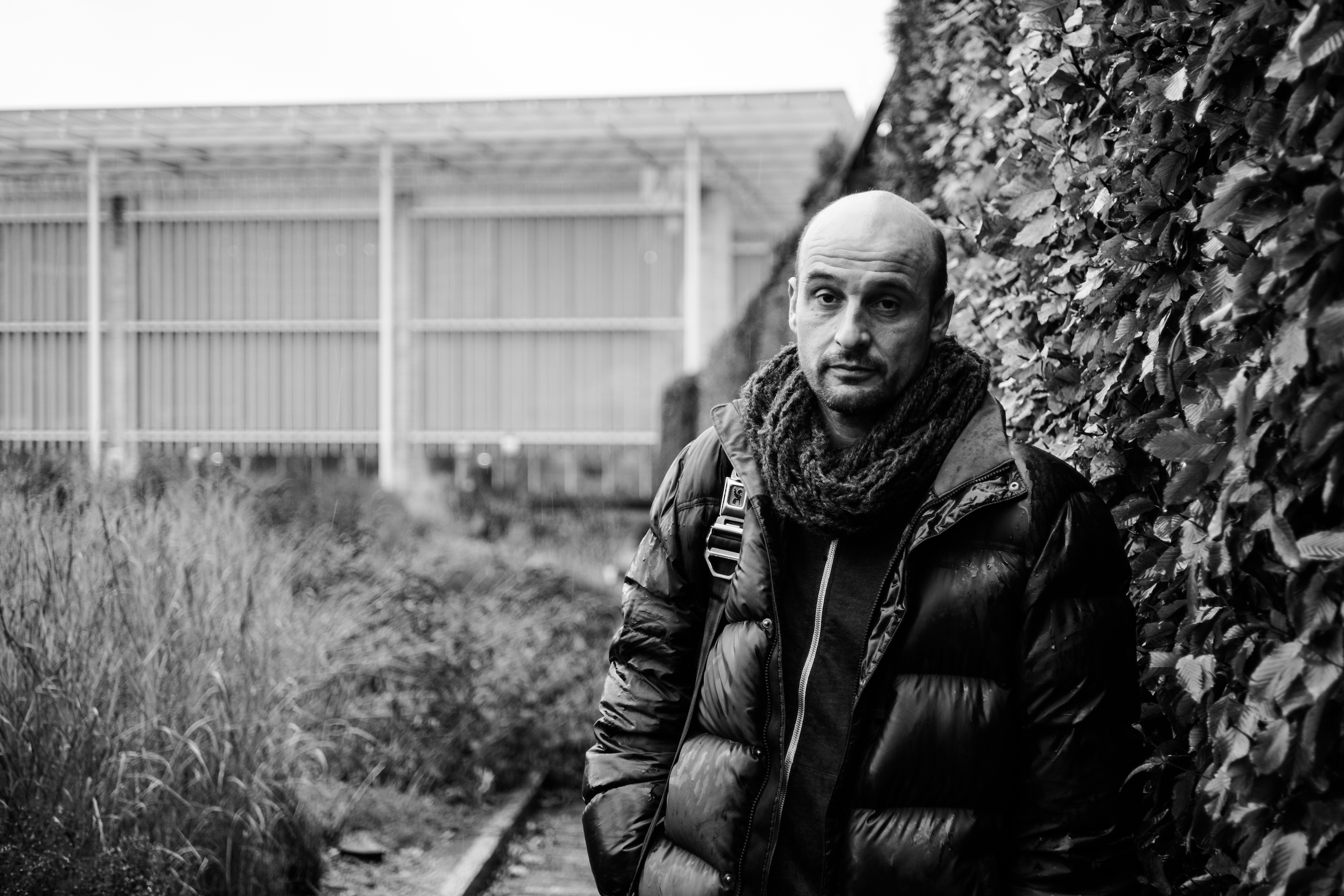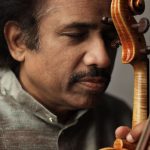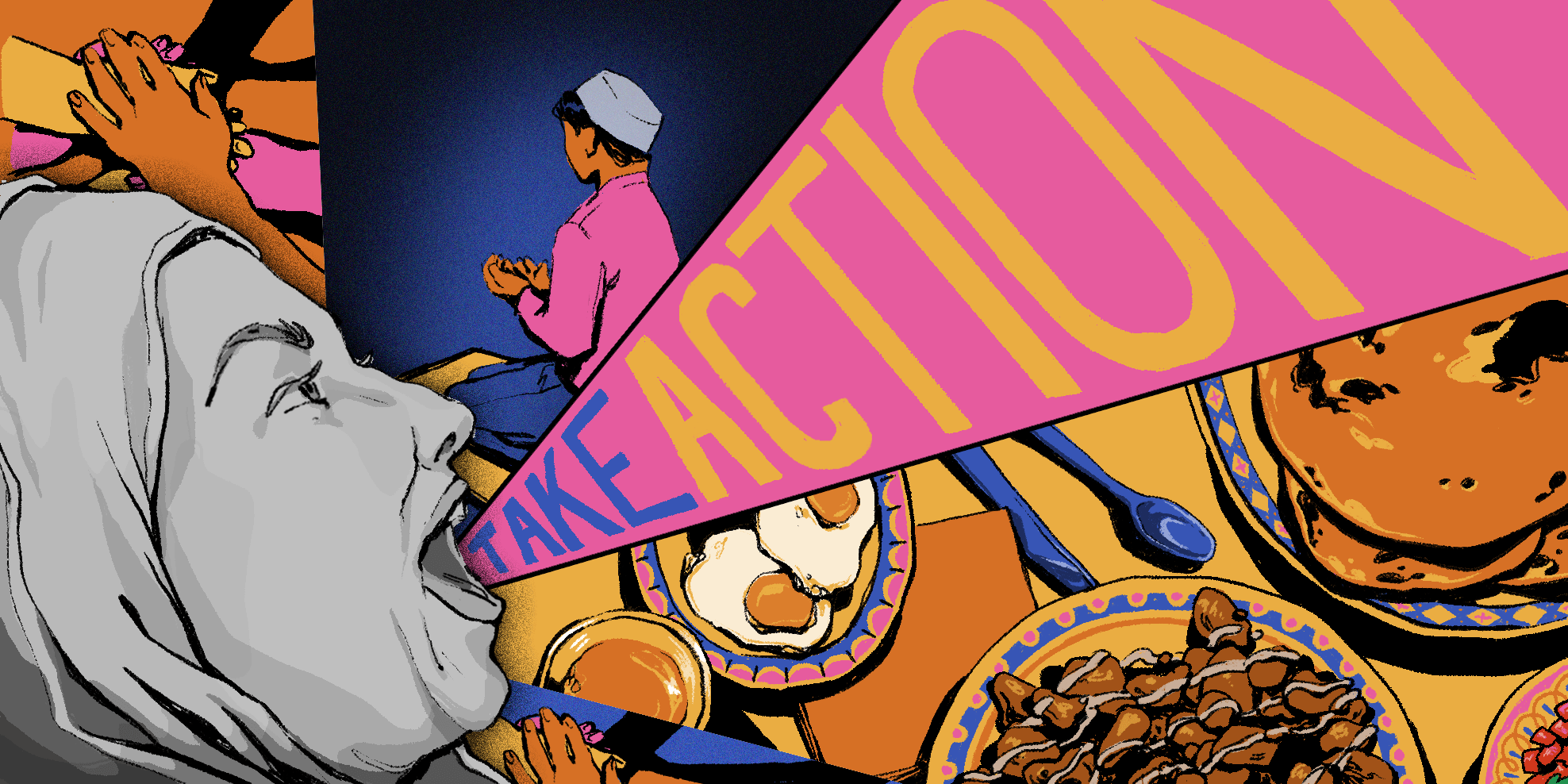
Photograph by Emily Mercedes Rich.
“Portrait of the Artist as an Artist” is an interview series with the goal of showing that making a career as an artist is achievable and how. For our first interview of 2017, F Newsmagazine sits down with Chicago-based artist and educator Jan Tichy.
Emily Mercedes Rich: As an introduction, can you tell us what do you do and why?
Jan Tichy: I make art and I teach art to be in an active dialogue with the world around me. And I’m somebody who does believe that art has the ability to change thoughts, feelings, maybe things; it can happen through different processes from the act of doing to the act of presenting to the act of collaborating and the act of educating. I think it’s all part of this large basket.
EMR: Did you always want to teach in addition to making art?
JT: Well, I guess it actually came before or [they came] together. Each on its own, but I’ve always been an educator and I’ve worked at different levels with people. From a certain point it became mostly art education, but I worked with different groups. I was a counselor. I worked in different education positions, not just as an art teacher. I taught other things. I worked with different groups.
EMR: You started out in political science; how did you get from there to art-making and teaching, or did they always go hand-in-hand?
JT: I said that art can change or that I believe that art can change, so I guess I, like all of us today, am part of major sociopolitical shifts. I experienced the Velvet Revolution in 1989 in a very active way. I [had] just immigrated to Israel when the Oslo Accords were signed and there was a peace in the Middle East — I don’t know if anybody remembers that, but that was something that happened and had huge implications. You know, I was in my studio on Columbus Drive as part of my MFA in sculpture when Obama won right out there, right outside our studios, and so I was lucky to be able to experience that moment of possible changes […]I think one of the things to study political science was just a wish to understand what does it mean and how does it work, and especially when moving from post-revolutionary Prague to the Middle East, a completely new environment, and the degree was actually political science and middle-eastern studies. I actually didn’t finish that degree. I don’t have a degree in political science. I was there for four years, but I didn’t finish it. Which might also say something about what it was for. Right? It wasn’t really to become an ambassador to anywhere, but rather a way to understand.
EMR: That’s evident in your work. It always works for and with a context, whether that’s Project Cabrini Green or aroundcenter or your solo show [“Seven Doors: Jan Tichy and the Chiaroscuro of Art Museum Collecting”] that just closed in Santa Barbara. What is the process for that type of project? Because it’s site-specific.
JT: And therefore, each process needs to be very specific to the place, to the reasons, to the concept, to the participants, especially with what’s being called “socially-engaged art” or art processes that are in different levels of collaboration with different groups of artists or participants, audiences, collaborators. There cannot be a model for it, because every time the people, the situation, the reasons are so different. The only thing I can think about that always needs to happen is the listening. You always need to be listening really well before even uttering the first word. You’re responding to places that are charged — and that’s when I usually respond, when there’s a situation that is charged — so listen.
EMR: How do you navigate the business side of art?
JT: I don’t.
EMR: You don’t? Fair enough.
JT: I mean, I have like five galleries representing me that are trying [to sell] or selling some of the work I am making. The exhibition that I have now in Berlin, it’s a commercial gallery; they really hope to sell stuff. So they deal with that. I don’t deal with that. It’s nothing I’m concerned with. Being a full-time professor at School of the Art Institute (SAIC) actually allows me not to care. It’s really important. Teaching is really more a part of who I am, but being a full-time professor means that I don’t have to care about selling my art because I am financially [set]. I can live.
EMR: If you could have asked an artist any question when you were in college or just starting out, what would it have been? And how would you answer it today?
JT: That would depend who I’m asking, but if you mean if I would be asking myself, and you know, in a way I’m just coming from grad advising. I was in the place of an MFA sculpture student ten years ago where I had these questions that I was asking my advisors, the SAIC professors, today my colleagues. So I can think about what I would be asking myself if I were coming to my own studio for grad advising, but I don’t have an immediate answer. I don’t think I can come up with a specific question, but the more general questions that I think were urgent for me as a student, and I don’t think that they’ve really changed in the sense of what I’m asking as young artist or mid-thirty artist, whatever I’m defined as today. How is it relevant? How does it matter? These things that, as artists, we are always questioning in relationship to our practice. How does it matter in the world? And I think looking at these questions today, in our post-election reality, are important to ask more than ever. And I think that, as somebody who comes from and lived in places during politically charged times where things were in shift, I think that it’s when we as artists as well as citizens are needed to be and respond.
EMR: The function of this series is to show that working as an artist is an achievable goal; your resume is almost evidence enough but if you were to provide another piece of evidence for our readers, what would it be?
JT: It’s really hard to talk about. I completely understand your question and I think it’s important and valuable and relevant. And I understand that students and their parents are asking it, especially at SAIC. At SAIC, the studies and the experience costs a lot of money, so the question of the value might be more present than in other places. […] Art allows me to be a full participant. I’m mostly, as an artist, active in America and in Israel, in places I do not come from. And you might argue that, for example, in the United States, as a green card holder, I have just certain rights of participation in this society that I live in, so the art, for example, allows me to be in another dialogue, another active participation. […] What I think is important is to make sure that what you are being paid for is creatively changing the environment around us, that is actively participating in it. You cannot say that about every job that one can have, definitely not about the range of possibilities that [art] provides. At the same time, it’s really hard as a parent that is there behind our students with all the financial concerns, before paying the tuition and after paying the tuition.
EMR: So I have some rapid fire questions for you: what did you have for breakfast this morning?
JT: Blueberry muffin.
EMR:Who is your favorite artist?
JT: I don’t think that I have a single favorite artist. I admire a lot of artists that are successful in different ways of communicating their ideas for different reasons, so it’s hard to say who. Yesterday, I think, wasn’t it the birthday of Félix González-Torres? Yeah, so in my bedroom, I have two of these big takeaway posters from him. Does it make him the favorite? I don’t think so! And another thing that is there is a poster of [Aaron] Siskind, a photographer. My most favorite? No, but I have a lot of relationship there. If you were to ask other people about me, they would probably say [László] Moholy-Nagy. Some of my work responds to and is in a dialogue with [him]. I don’t think he’s my most favorite artist. He’s definitely the artist I am in dialogue with most.
EMR: Do you watch TV? And if so, what’s your favorite show?
JT: What is TV? What is television today? Because I don’t have a TV, but I do watch TV shows sometimes. Does that mean I am watching TV? From a historical perspective, I think “The Wire” was a major experience in relation to the genre. I’m now watching “Black Mirror.” I’ve seen three episodes.
EMR: What’s your idea of perfect happiness?
JT: It’s like probably being in love, no? Not really related to art. I can experience happiness in different moments. I’m not sure about “perfect,” but happiness under many different circumstances. Some have to do with art or art-making or art-consuming. When I saw the Moholy exhibition for the first time in Guggenheim, that was pretty powerful. Was it perfect happiness? No, I guess no. So I guess that depends where you are, but perfect happiness is probably when you fall in love. Just that, nothing else.
EMR: Where’s your favorite spot in Chicago?
JT: I guess [Alfred] Caldwell’s Lily Pond. I have a few. Another is the Montrose jetty.
EMR: Where can we find your work?
JT: Hopefully in two weeks on the facade of the Hyde Park Art Center, if you’re asking about Chicago. If you’re asking about the Midwest, so on January twenty-first I open a large project at the Broad Museum in East Lansing, Michigan which is an interesting place and not so far away. Some of the work that we are doing in Gary is happening in Gary. Yeah, and I have three shows in Europe, if someone is traveling to Berlin, Prague, or Osnabrück.





















